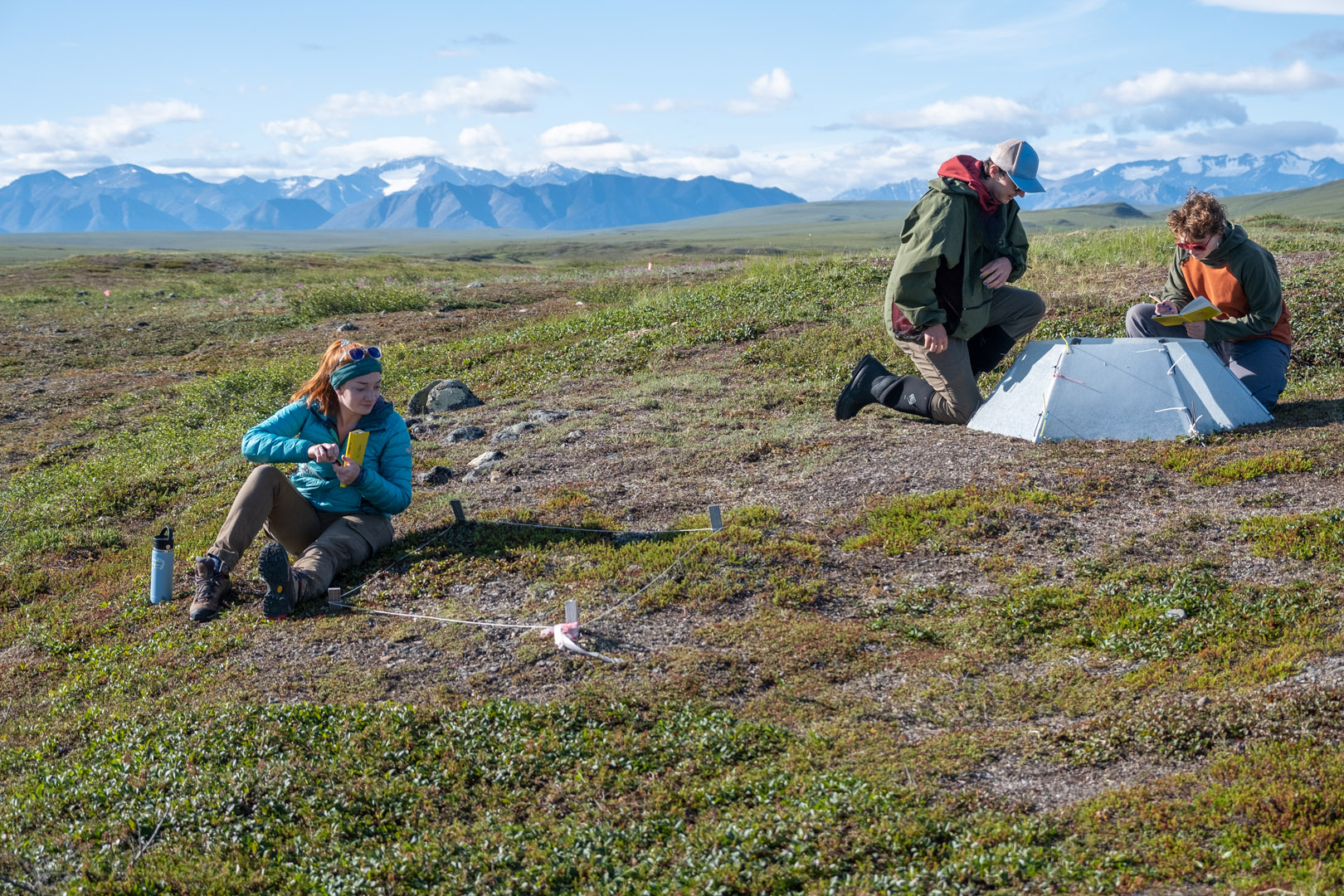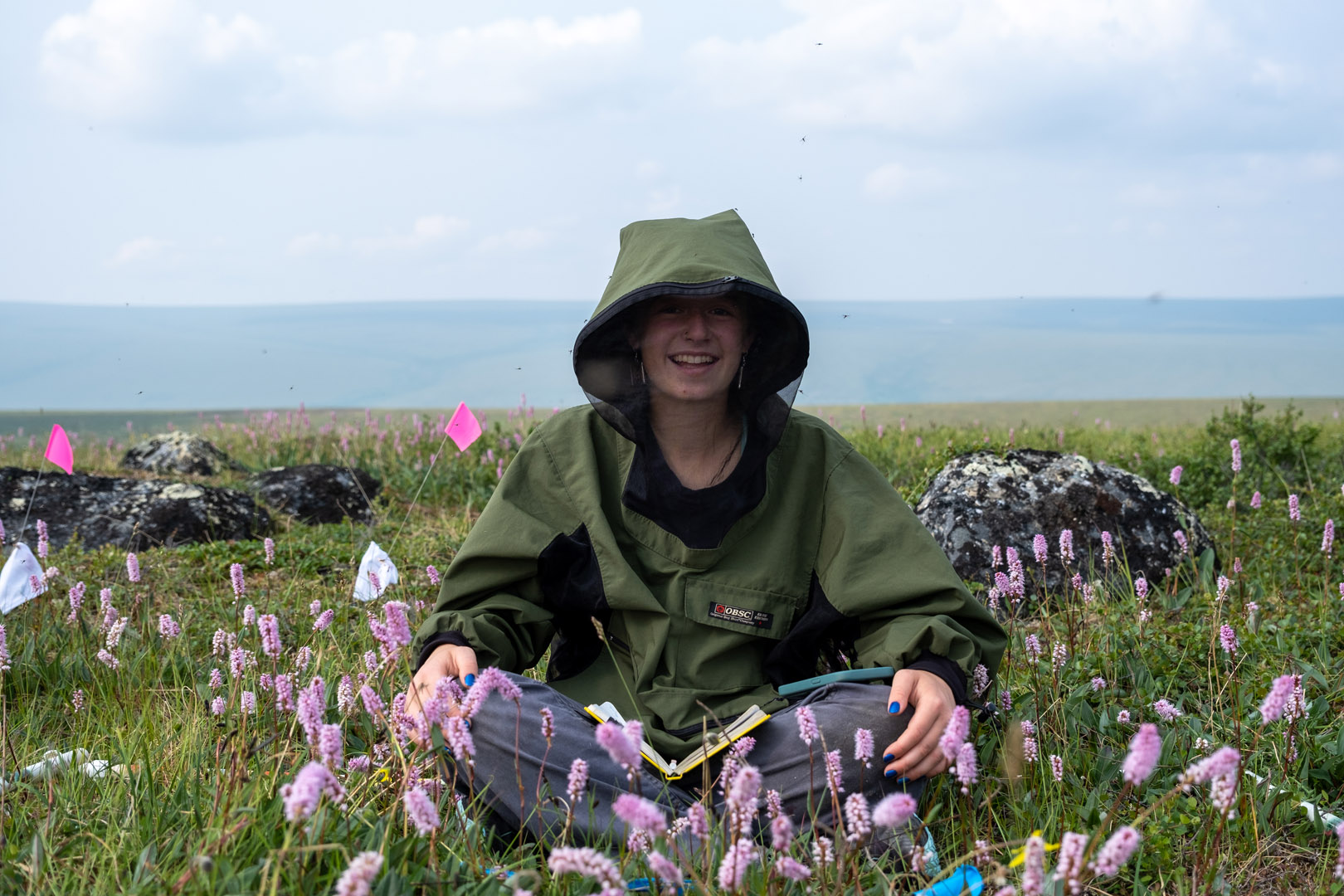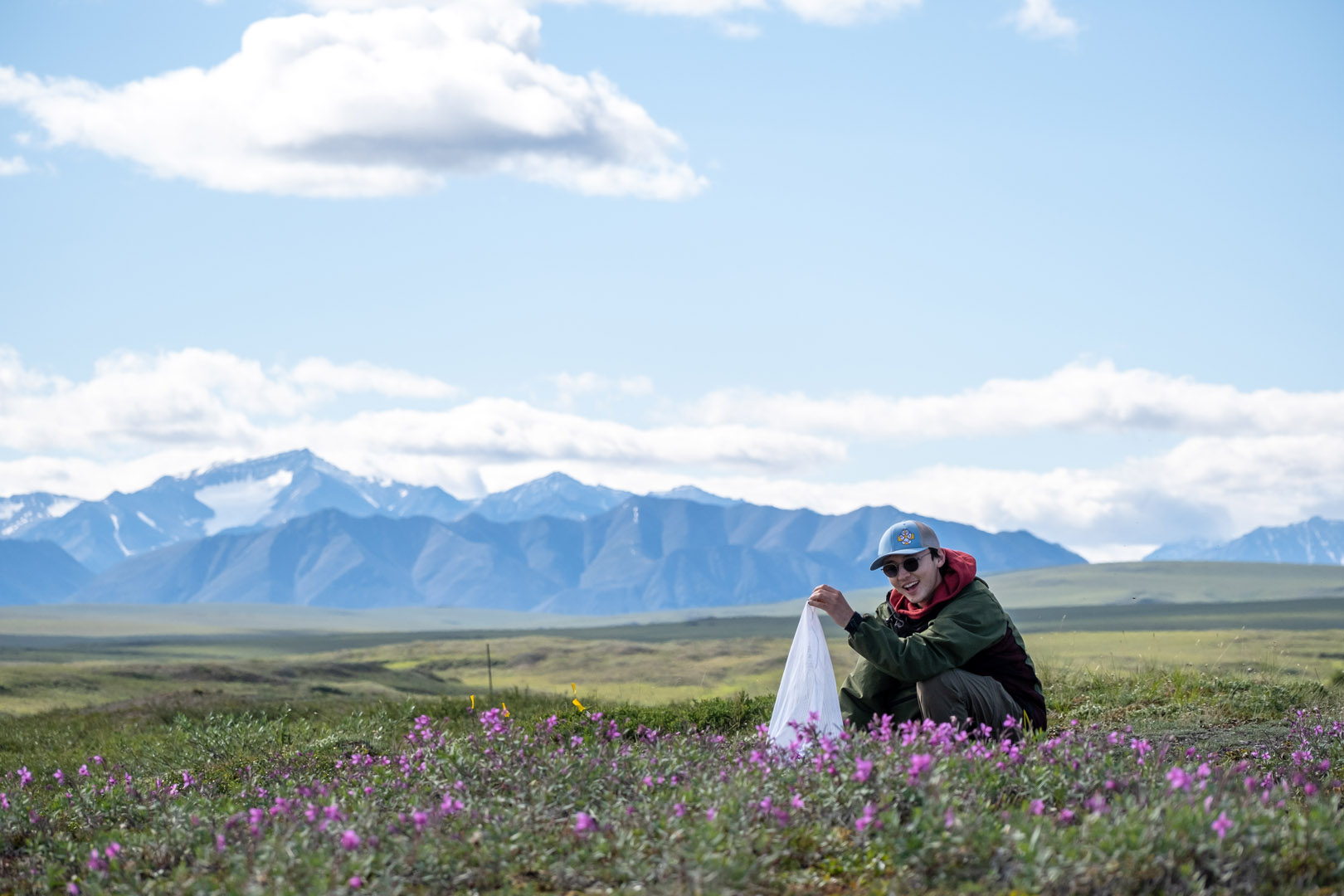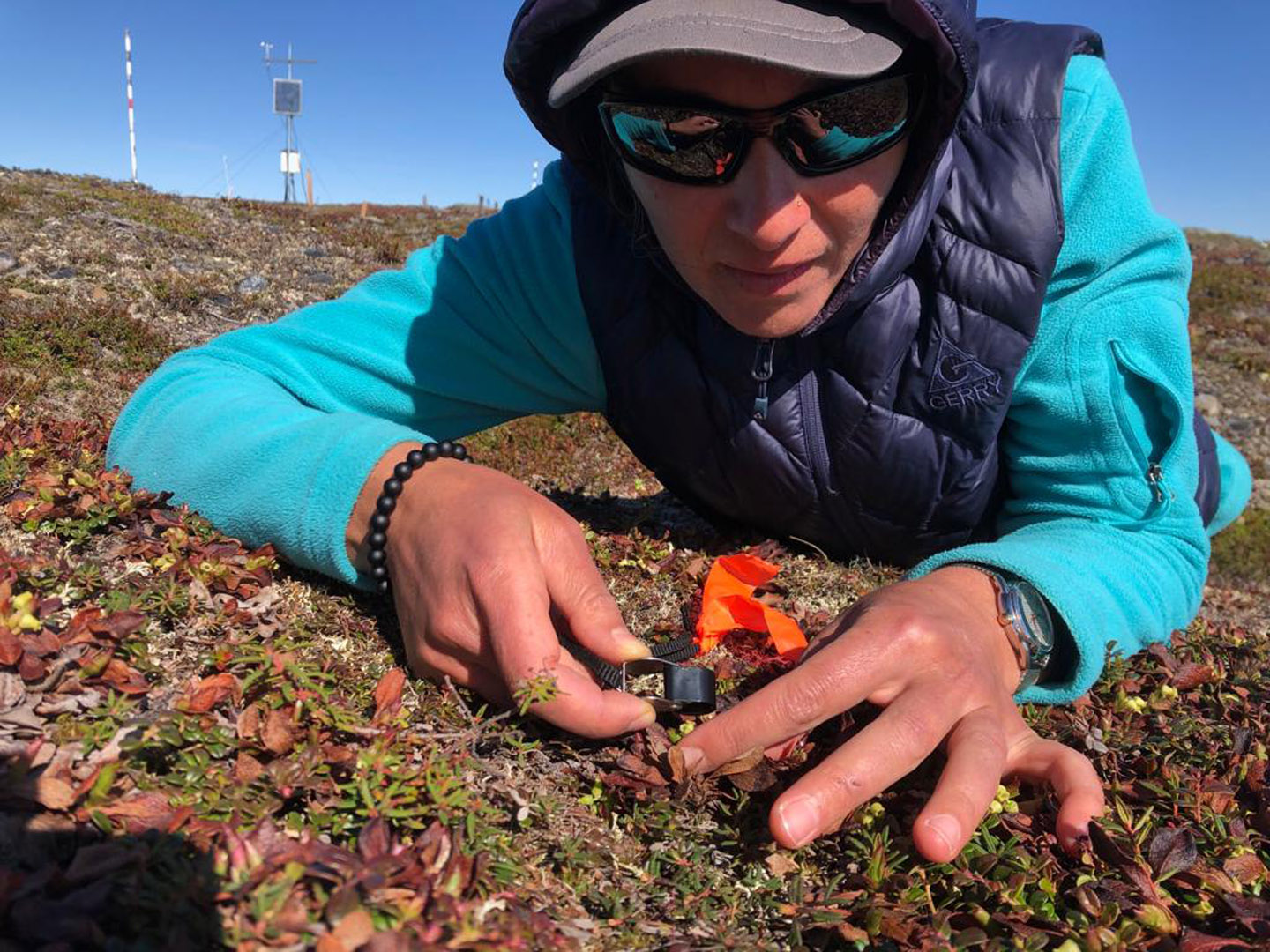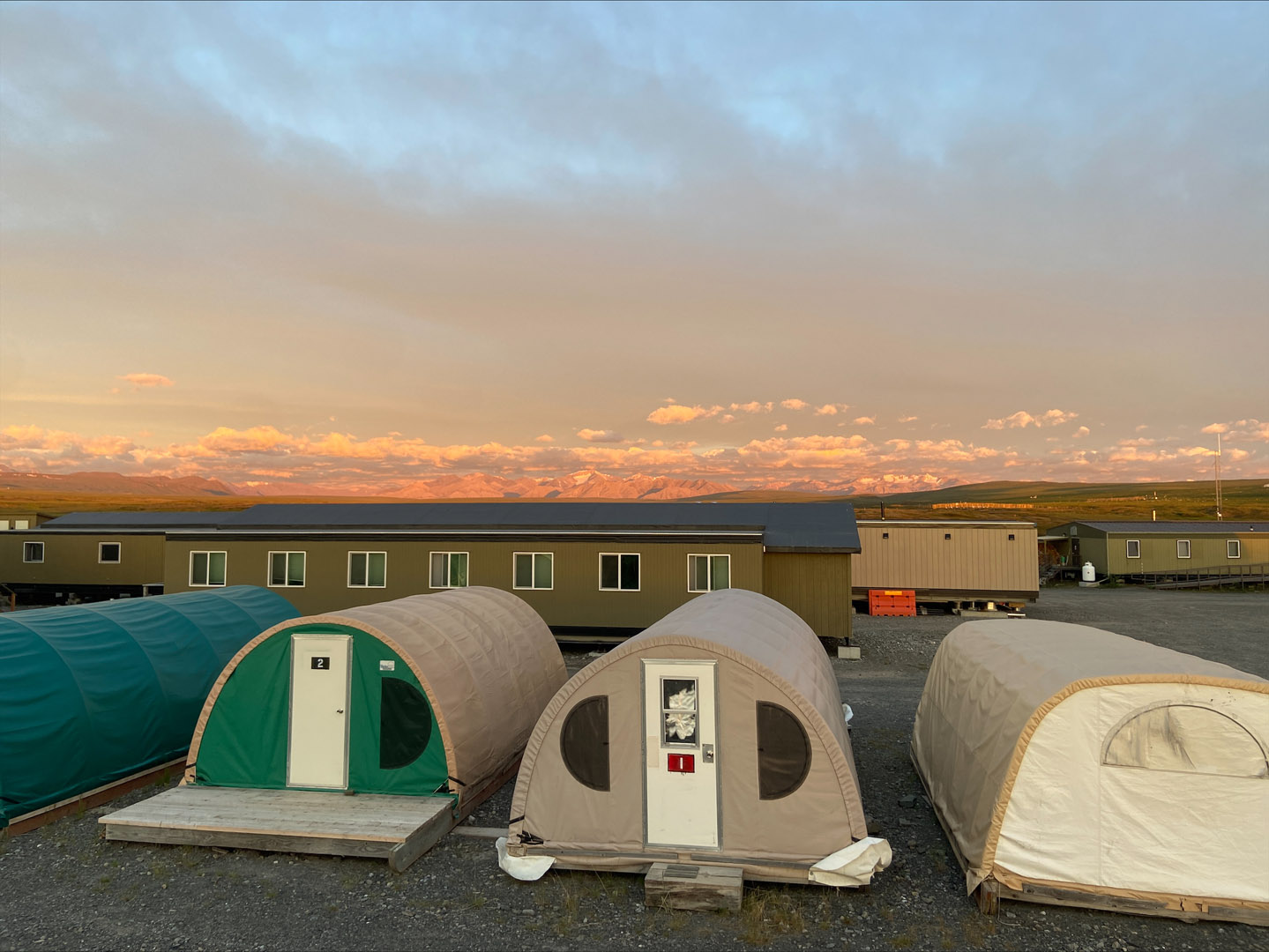While some people spend their summers enjoying the warm weather, three CC students spent the last two and a half months in Alaska studying the effects of climate change on the plant-pollinator community.
Caroline Brose ’22, Zach Ginn ’23, and Luca Keon ’25 were at Toolik Field Station with about 100 other researchers and students, most of whom were also focused on climate change research, says Ginn. Toolik Field Station is an international field station north of the Arctic Circle, on Alaska’s North Slope.
The students were conducting research for Dr. Roxaneh Khorsand, a visiting assistant professor in the Department of Organismal Biology and Ecology. She and her collaborators, Dr. Steve Oberbauer (Florida International University) and Dr. Jeremy May (Marietta College) quantify plant physiological and reproductive responses to climate change. This research is part of the International Tundra Experiment (ITEX), a consortium of scientists that carry out long-term studies of climate change in arctic, Antarctic, and alpine sites.
“The Arctic is warming faster than any other region on Earth. We are trying to understand the rapid ecological changes that are taking place so we can predict how this region will look in the future and what that means for energy balance and biodiversity on this planet,” says Khorsand.
As part of the research, Brose, Ginn, and Keon use passive warming devices, open top chambers, and compare timing of flowering and insect activity in the warmed plots versus the control (un-warmed) plots. The students seek to determine how an increase in temperature affects flowering patterns, the amount of nectar produced, and what type of insects interact with the plants.
A long-term goal with this research is to see if the phenology, or timing of flowering, of the warmed plants changed, compared to the controls, says Keon. For example, the students wanted to observe whether the warmed plants will flower earlier in the season than the controls.
Khorsand says that a major knowledge gap is the effects of warming on biological interactions in the Artic, specifically plant-pollinator interactions. “My research aims to understand if plants and their pollinators are responding to environmental change in a synchronous manner, as well as how higher temperatures may affect floral rewards for insects and the implications for plant reproductive success.”
In addition to conducting research for Khorsand’s lab, Ginn is collecting data for his thesis on plant-pollinator networks.
As part of COVID precautions mandated by the National Science Foundation, the students were required to quarantine for eight days at a hotel in Fairbanks before being driven to the field station, about 10 hours north of Fairbanks.
This was the second summer doing research at Toolik Field Station for Brose, who is now pursuing a Ph.D. in botany at the University of Wyoming.
“I returned from my first summer at Toolik having solidified in my mind that I want to combine my interest in systematics with the love that I have for arctic plants, which was how my grad school research ideas came about,” says Brose. “Without the opportunity to be a research student in the Arctic for Roxaneh, I do not believe that I would be headed to graduate school this fall, and instead I would be working for at least a year trying to figure out my study system.”
Once the school year starts, Ginn and Keon will analyze hundreds of insect specimens for pollen content to determine which types of insects transport pollen most effectively.
“We have been training OBE students in the Arctic since 2019 and we continue to be impressed with their knowledge, work ethic, and genuine passion for fieldwork,” says Khorsand.



